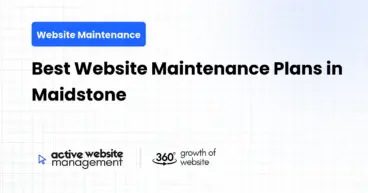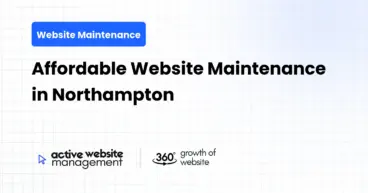January 7, 2025
5 min read
1. Regular Content Updates: Keep Your Menu Fresh and Customers Engaged
Why Regular Content Updates Matter
In the bustling food business, keeping your restaurant website fresh and updated is crucial. Customers are always on the lookout for new experiences, and your website is their virtual gateway. Regular updates enhance your site’s SEO, helping it rank higher on search engines. Fresh content also signals to visitors that your restaurant is active and thriving—an essential trust signal.
How to Effectively Update Your Restaurant Website Content
- Menu Updates: Seasonality, new chef specials, or limited-time offers should be reflected on your site immediately.
- Blog Posts: Share insider secrets, like how a dish is prepared, or feature stories about staff and local partnerships. Regular posting boosts your site’s authority and engagement.
- Event Announcements: For events like wine tastings or live music nights, create a dedicated space to attract interest.
Tips for Consistent Content Updates
- Content Calendar: Plan out updates and postings months in advance—a lifesaver during busy periods.
- Delegate Responsibility: Assign staff members to manage specific sections like the blog or event page.
Don’t Just Maintain Your Website—
Grow It using Active Website Management! Don't Wait for Growth—Accelerate It with Active Website Management
2. SEO Optimization: The Backbone of Visibility in the Food Business
Understanding Food Business SEO
Search Engine Optimization (SEO) is pivotal in increasing your restaurant website’s visibility. With more people choosing where to dine based on online research, food business SEO tactics can drive more foot traffic to your restaurant.
Key Strategies for Effective SEO
- Keyword Research: Use tools like Google Keyword Planner to find terms and phrases genuinely used by your potential customers, such as “best [cuisine] in [your location]”.
- Local SEO: Claim your restaurant on Google My Business and ensure details like your address, phone number, and business hours are current.
- High-Quality Backlinks: Collaborate with local bloggers or food critics to get your website links on respected platforms.
Practical Implementation Tips
- Optimize Images: Ensure that all images on your site have descriptive, keyword-rich ALT tags.
- Increase Loading Speed: A faster site is favored by search engines and users alike. Use tools like GTmetrix to identify areas for improvement.
3. User Experience Design: Ensuring Seamlessly Delicious Browsing
Why User Experience Matters
The architecture of your restaurant website reflects the ambiance of your physical restaurant. A user-friendly site leaves positive impressions and encourages direct bookings or visits.
Essential Elements of Great User Experience Design
- Responsive Design: As mobile browsing surpasses desktop, your site must adapt seamlessly across all devices.
- Intuitive Navigation: Organize your menu logically, and ensure that key information (like contact details and hours) is easy to find.
- Call to Action (CTA): Strategically place CTAs, like ‘Book Now’ or ‘Join Our Mailing List,’ to maximize conversions.
Steps to Improve User Experience
- Conduct User Testing: Gather feedback from real users and tweak the design based on their interactions.
- Heatmaps and Analytics: Utilize tools such as Crazy Egg to understand user navigation and improve design issues.
4. Security Measures: Protecting Your Restaurant Site from Digital Threats
Don't Wait for Growth—Accelerate It with
Active Website Management Don't Wait for Growth—Accelerate It with Active Website Management
Why Security is Crucial
With cyberattacks on the rise, safeguarding your website isn’t just an option; it’s a necessity. Security breaches not only harm your reputation but can also lead to legal issues.
Must-Have Security Protocols
- SSL Certificates: Encrypt data transmission to make transactions secure and improve your SEO ranking.
- Regular Software Updates: Always update your CMS, plugins, and themes to patch vulnerabilities.
- Backup Solutions: Regularly back up your website data to prevent loss due to hacking or technical failures.
Practical Security Enhancements
- Firewall Use: Implement a robust web application firewall (WAF) to block malicious traffic.
- Two-Factor Authentication (2FA): Add an extra layer of security to protect sensitive information.
5. Performance Monitoring: Keeping Your Site Running Like a Well-Oiled Machine
Why Monitor Website Performance
A slow or frequently crashing website drives potential customers away. Continuous performance monitoring ensures that your site runs smoothly and efficiently.
Performance Metrics to Track
- Page Load Time: Aim for under three seconds to keep visitors engaged.
- Uptime: Ensure your hosting provider offers at least a 99.9% uptime guarantee.
- Visitor Analytics: Use Google Analytics to track user behavior and improve services thus offered.
Tools and Tips for Effective Monitoring
- Regular Audits: Use tools like Pingdom to conduct comprehensive performance audits.
- Scalable Hosting Solutions: Choose reliable hosting that can handle peak traffic periods with ease.
Active Website Management: Your Partner in Digital Excellence
For those who find maintaining their restaurant website challenging, Active Website Management offers comprehensive solutions. They specialize in ensuring your site is up-to-date, secure, and performing at its best. From content updates to security and SEO strategies, they handle it all so you can focus on what you do best—delighting diners with your culinary creations.
The Benefits of Comprehensive Website Maintenance
Why a Well-Maintained Restaurant Website Makes a Difference
In today’s digital-first world, your website is often the first point of contact between you and potential customers. A well-maintained site doesn’t just attract visitors; it turns them into loyal patrons. By adhering to these top five maintenance tips, your restaurant can enjoy:
- Increased Web Traffic: Enticing more online visitors translates to more in-restaurant diners.
- Enhanced Customer Trust and Engagement: Regular updates and a secure, well-functioning site breed confidence.
- Better ROI: A seamless digital experience cuts down on bounce rates and boosts conversion efficiency.
Steps to Implement a Maintenance Routine
- Monthly Reviews: Dedicate time each month to inspect and update all facets of your site.
- Professional Support: Consider hiring professionals, like Active Website Management, to ensure everything runs smoothly, enabling you to offer the best possible dining experience.
In essence, maintaining your restaurant website isn’t a mere technical necessity—it’s an integral part of your brand’s success strategy. By prioritizing regular updates, SEO optimization, user experience, security, and consistent performance monitoring, you’re setting your restaurant up for digital, and literal, culinary excellence.







